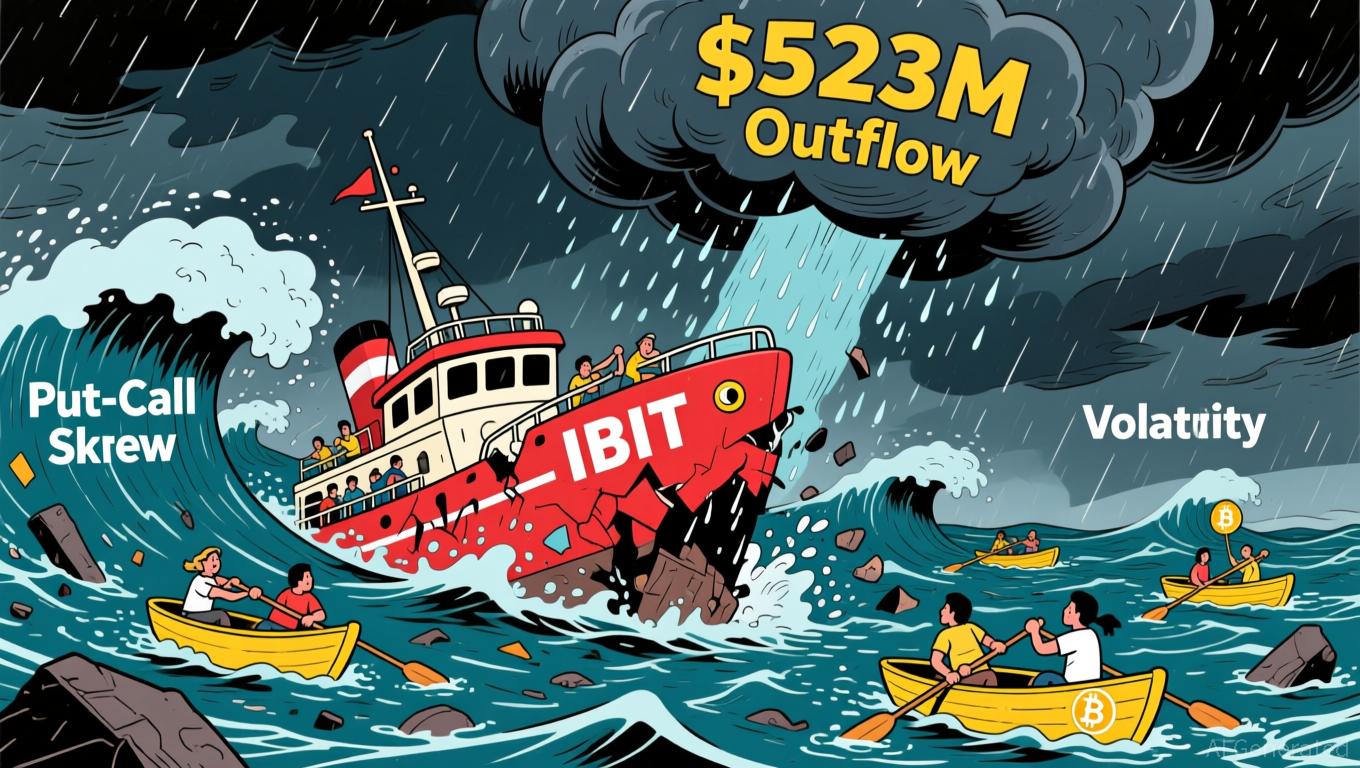1M coins left to mine as Bitcoin enters ‘5% era’ — miners say the most dangerous part is only beginning
Bitcoin crossed a watershed moment in its monetary history on Nov. 17, surpassing 19.95 million mined coins and pushing the network past 95% of its immutable 21 million supply cap. This leaves the network with less than 1.05 million BTC to mine over the next 115 years.
On the surface, the milestone appears to be a victory lap for the digital asset as it represents a validation of the scarcity narrative that has driven its adoption by Wall Street giants and sovereign balance sheets alike.
Yet, for the industrial operators responsible for securing the blockchain, the celebration is muted.
In reality, the crossing of the 95% threshold marks the beginning of Bitcoin’s most capital-intensive and operationally unforgiving phase: the “5% Era.”
Bitcoin’s mathematics of the long tail
Bitcoin’s issuance schedule is not a linear progression but a geometric decay, governed by the “halving” event. This is a hard-coded event that reduces block rewards by 50% every 210,000 blocks, or approximately every four years.
When the network launched in 2009, miners could extract 50 BTC every ten minutes. Today, following the April 2024 halving, that reward stands at just 3.125 BTC. This decay function means that while the network is nearing its supply ceiling in terms of quantity, it is only at the midpoint in terms of time.
The final 5% of supply will be stretched across a century-long timeline, with the very last partial bitcoin not expected to be mined until the year 2140.
For macro investors, this trajectory is the core investment thesis. Bitcoin is transitioning from a youthful, high-inflation asset into a mature commodity with an inflation rate destined to drop below that of gold and, eventually, near zero.
This programmatic scarcity is precisely what fueled the approval of spot ETFs and the entry of institutional capital.
However, for miners whose business models were built during an era of abundant subsidies, this transition represents a looming revenue cliff. The era of “easy money” mining is mathematically over.
The miner’s paradox
The economic strain of this transition is not a theoretical future problem; it is visible in today’s on-chain data. The “5% Era” is beginning under arguably the most difficult market conditions in the network’s history.
Hashprice, which is the industry standard metric for tracking miner revenue per unit of hashrate, plummeted to $38.82 per petahash per second (PH/s) per day last week.
This represents a 12-month low and a severe contraction from the $80-$100 levels seen during previous bull market cycles.
The collapse in revenue is driven by a “Miner’s Paradox”:
- Price Weakness: With Bitcoin trading below $90,000, the fiat value of the 3.125 BTC block reward is insufficient to cover the operational expenditure (OpEx) of older fleets.
- Record Difficulty: Despite falling revenue, the network hashrate has not capitulated. It remains elevated near 1.1 zettahash per second (ZH/s).
Typically, when revenue drops, inefficient miners unplug, difficulty adjusts downward, and margins recover for the survivors.
That mechanism appears broken in the short term. Miners, flush with capital raised during previous quarters or locked into long-term hosting contracts, are keeping machines running at a loss or breakeven.
On-chain data reveals the damage: the industry recently earned a weekly average of just over $37 million per day, a sharp decline from the $40 million-plus daily averages seen months prior.
As a result, the sector is currently caught in a vice where revenues are falling while the difficulty of extraction rises, a dynamic that invariably leads to consolidation.
The pivot to AI
Facing this structural margin compression, the mining industry is fracturing into two distinct camps: the “Pure Plays” who are doubling down on Bitcoin efficiency, and the “Hybrid Operators” who are fleeing the sector entirely for a more lucrative market in Artificial Intelligence.
The logic is strictly improved unit economics. The same power capacity and cooling infrastructure used to mine Bitcoin can, with hardware adjustments, be used to power High-Performance Computing (HPC) and AI model training.
Currently, the arbitrage is massive because AI compute can yield exponentially higher revenue per megawatt-hour than Bitcoin mining.
In 2024, VanEck analysts quantified this opportunity, projecting that Bitcoin miners could unlock up to $38 billion in incremental annual revenue by diverting just 20% of their power capacity toward AI and HPC workloads.
The market is already witnessing this capital flight. Bitfarms, a name once synonymous with aggressive Bitcoin hashrate expansion, signaled a distinct shift with its recent announcement to wind down specific crypto operations in favor of AI compute.
Meanwhile, other operators across Texas and the Nordics, including Coreweave and Hive Digital, are also retrofitting facilities to capitalize on the AI boom.
This shift signals a broader transformation. The Bitcoin miners of the future may not be “miners” at all, but massive, hybrid energy-compute conglomerates where Bitcoin mining is merely a secondary revenue stream used to monetize excess power when AI demand dips.
This diversification may save the companies, but it raises questions about the long-term distribution of hashrate dedicated solely to securing the Bitcoin ledger.
The fee market
If the block subsidy is destined to vanish and miners are pivoting to AI, what will secure the Bitcoin network in 2030, 2040, or 2100?
Satoshi Nakamoto’s design posits that as the subsidy disappears, it will be replaced by transaction fees (the “service charge”). In this theory, demand for blockspace, driven by high-value settlements and financial applications, will become robust enough to compensate miners for maintaining the network.
However, the “5% Era” will test this thesis.
Currently, the fee market is volatile and unreliable. While the introduction of “Inscriptions” and “Runes” (protocols that allow data to be inscribed on satoshis) created brief spikes in fee revenue, the baseline demand for blockspace often remains too low to sustain the current hashrate without subsidies.
So, if Bitcoin’s price does not double every four years to offset the halving, transaction fees must rise to fill the void.
However, if they do not, Ethereum researcher Justin Drake has argued that the network’s security budget, which is the total amount of money allocated to protect the chain from attacks, will shrink.
In that scenario, Drake said this could have a “systemic effect” on the emerging industry and “the fallout could take the entire crypto ecosystem with it.”
Miners face “Bitcoin’s most difficult phase”
Considering the above, the 95% supply milestone is less a finish line and more of a starting gun for Bitcoin’s most challenging phase.
The “free ride” of high inflation is over. For the first 16 years, miners were subsidized by the protocol to build out infrastructure.
Now, that subsidy is evaporating. The market structure is shifting from a gold rush, where anyone with a pickaxe could profit, to a brutal commodity market defined by economies of scale, energy arbitrage, and balance sheet efficiency.
Still, Bitcoin’s long-term vision remains intact. Its design ensures that scarcity compounds while monetary inflation trends toward zero.
However, the burden of enforcing that scarcity now falls heavily on the miners.
So, as the rewards for securing the network dwindle toward zero over the next 115 years, the mining industry will likely experience a washout of unprecedented scale.
Essentially, the operators who survive the “5% Era” will not only be miners, but also energy merchants and computing giants. Their struggle to extract the final million coins will shape not only the price of the asset but also the geopolitical reality of the network itself.
The post 1M coins left to mine as Bitcoin enters ‘5% era’ — miners say the most dangerous part is only beginning appeared first on CryptoSlate.
Disclaimer: The content of this article solely reflects the author's opinion and does not represent the platform in any capacity. This article is not intended to serve as a reference for making investment decisions.
You may also like
Bitcoin News Update: Japan's Bond Turmoil Triggers Worldwide Crypto Sell-Off Amid Yen Carry Trade Reversal
- Japan's $135.4B stimulus package triggered a 3.41% surge in 30-year bond yields, destabilizing the $20T yen carry trade and sparking global crypto/stock selloffs. - Rising yields threaten Japan's 230% GDP debt load with higher servicing costs, creating a "debt death spiral" risk as BOJ hesitates to tighten policy. - Forced deleveraging by financial institutions intensified Bitcoin's 26% drop, with Ethereum/XRP/Solana also falling 3-5.6% amid margin calls and capital repatriation. - Upcoming 40-year bond

Bitcoin News Today: Bitcoin ETFs See $523M Outflow as Investors Weigh Fear Against Long-Term Strategies
- BlackRock's IBIT ETF recorded a $1.26B net outflow in Nov 2025, its largest redemption since 2024 launch. - Bitcoin price fell 16% to $52, triggering $2.59B outflows across 11 spot ETFs as bearish options demand surged. - Put-call skew hit 3.1% (7-month high), reflecting heightened pessimism and capitulation pressures in Bitcoin's price action. - Gold ETFs gained $289M as investors sought safe havens, contrasting with $1B inflows to tech/healthcare sector funds. - Year-to-date Bitcoin ETF inflows ($27.4B

YFI Drops 1.7% After Subpar Weekly Results as Edgewater Showcases AI-Powered Wi-Fi at Canada’s Leading Semiconductor Conference
- Edgewater Wireless will showcase AI-powered Wi-Fi 8 solutions at Canada’s premier semiconductor symposium in November 2025. - The company’s CEO will highlight ultra-reliable wireless roadmaps and a $2.4M commercialization initiative supported by $921K in government grants. - Its patented Spectrum Slicing technology claims 10x performance gains and 50% latency reduction, aligning with Canada’s semiconductor self-sufficiency goals. - Despite a 11.85% monthly stock decline, Edgewater positions itself at the

Ethereum Updates Today: Ethereum Transforms into Digital Bonds, Soaring Above $3,000 Driven by Institutional Interest
- Ethereum surged past $3,000 in late 2025 driven by institutional demand, ETF approvals, and technical upgrades like the Fusaka upgrade. - BlackRock's staked Ethereum ETF attracted $13.1B inflows since 2024, reclassifying staked ETH as "digital bonds" for institutional investors. - Over 69 corporations now hold 4.1M ETH in treasuries, but ETF outflows highlight ongoing market differentiation from Bitcoin . - Fusaka's focus on layer-1 scalability aims to redirect economic activity to Ethereum's base layer
